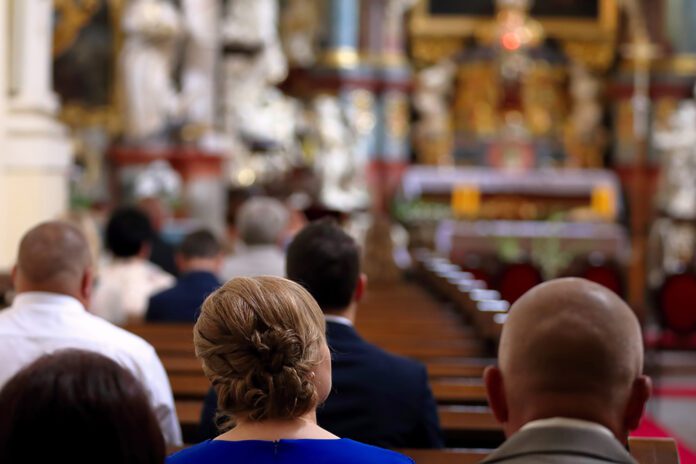Have you ever noticed that the second readings during Sunday Mass don’t often connect thematically with the other readings? That’s because the first reading and the Gospel are selected specifically to relate to one another, usually with the first reading pointing ahead in some way to the Gospel. Then there is the second reading.
This arrangement of the Lectionary was not always the case. The modern Lectionary for Mass was promulgated following the Second Vatican Council. Prior to the Council, the Latin Rite used a one-year cycle of readings consisting of a First Reading and a Gospel. The post-conciliar reforms brought about an incredible expansion of the Lectionary. The one-year cycle of readings was expanded to a three-year cycle, and the two readings were expanded to three so that each Sunday and Solemnity would include readings from the Old Testament, the Epistles, referred to as the Teachings of the Apostles, and a Gospel. The General Introduction to the Lectionary for Mass describes the arrangement of the readings for Sunday Mass in this way:
Each Mass has three readings: the first from the Old Testament, the second from an Apostle (that is, either from a Letter or from the Book of Revelation, depending on the season), and the third from the Gospels. This arrangement brings out the unity of the Old and New Testaments and of the history of salvation, in which Christ is the central figure, commemorated in his paschal mystery. (66.1)
During the extraordinary seasons of the year–Advent, Christmas, Lent, and Easter–all three of the readings tie together thematically. In Advent, “The readings from an Apostle contain exhortations and proclamations, in keeping with the different themes of Advent” (General Introduction to the Lectionary for Mass no. 93). The Epiphany reading calls the nations to salvation (no. 95). During Lent, “The readings from the Letters of the Apostles have been selected to fit the Gospel and the Old Testament readings and, to the extent possible, to provide a connection between them (no. 97). The Church also saves entire books for certain liturgical seasons. We always read from the Acts of the Apostles during the Easter Season since it details the earliest days and years of the Church after the Resurrection. 1 John, with its emphasis on the reality of the incarnation, is read during the Christmas Season. In the Easter Season, the Church reads semi continuously from 1 Peter in Year A, 1 John in Year B, and Revelation in Year C (no. 100).
For Ordinary Time, the Church lays out her rationale:
There is a semicontinuous reading of the Letters of Paul and James (the Letters of Peter and John being read during the Easter and Christmas seasons. Because it is quite long and deals with such diverse issues, the First Letter to the Corinthians has been spread over the three years of the cycle at the beginning of Ordinary Time. It also was thought best to divine the Letter to the Hebrews into two parts: the first part is read in Year B and the second in Year C. Only readings that are short and readily grasped by the people have been chosen. (no. 107)
The Church intentionally chose readings for Sunday Masses where not all readings are thematically related. The Church was fully aware that this would make it more difficult for preachers to comment on the second reading. So why did she still decide upon this arrangement? The Church wanted “to lead those who believe to the fullness of truth” (General Introduction to the Lectionary for Mass no. 68) because “The people of God have a spiritual right to receive abundantly from the treasury of God’s word” (no. 45). She wanted a Liturgy of the Word that provided a fuller expression of truth and exposure to the Word of God, even if it made it difficult to tie these readings into a homily on the Gospel that is cohesive, whitty, moving, and done in seven minutes.
While we do not often receive preaching and commentary on the second readings, formerly called the teachings of the Apostles by the Church, we cannot simply ignore them. The Acts of the Apostles tells us that the early disciples of Jesus “devoted themselves to the teaching of the apostles” (Acts 2:42). By the middle of the second century A.D., the apologist St. Justin Martyr described the early Church’s Liturgy of the Word:
“The memoirs of the apostles and the writings of the prophets are read, as much as time permits. When the reader has finished, he who presides over those gathered admonishes and challenges them to imitate these beautiful things.” (Apology 1, 65, quoted in the Catechism of the Catholic Church paragraph 1345).
From the earliest days, the teachings of the Apostles have been read at Mass and explained in a sermon or homily. After the passage of two thousand years, even though we often don’t get the homily focused on the Apostles’ memoirs, we still read them during liturgy today. The Church desires that we receive abundantly from this treasury and seek to imitate the beautiful things contained therein.

